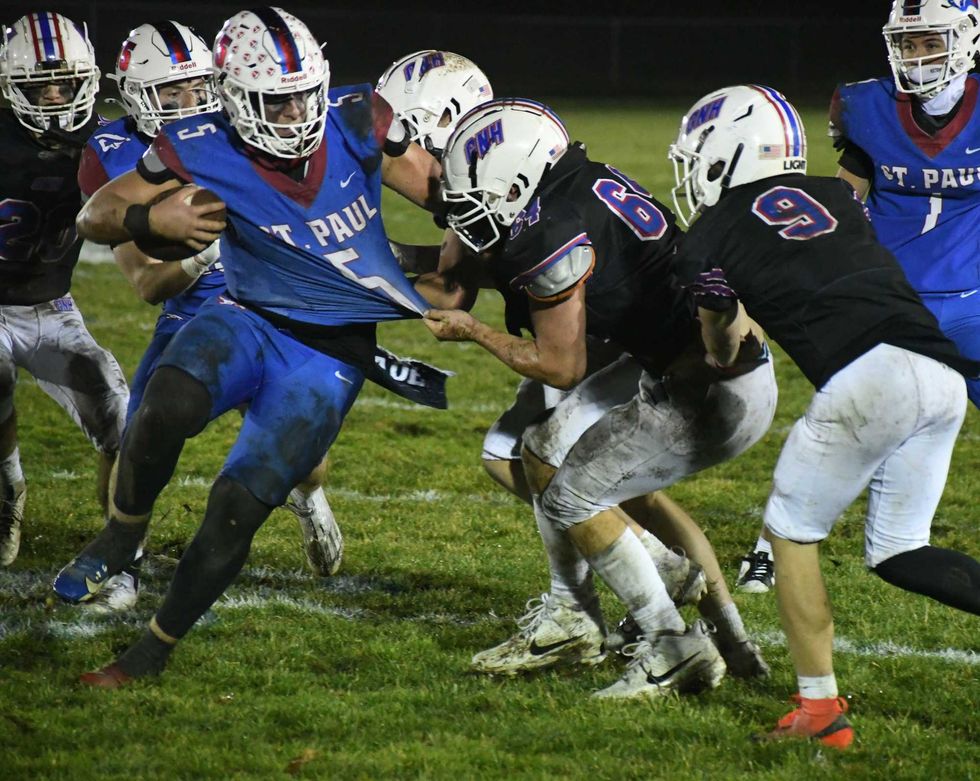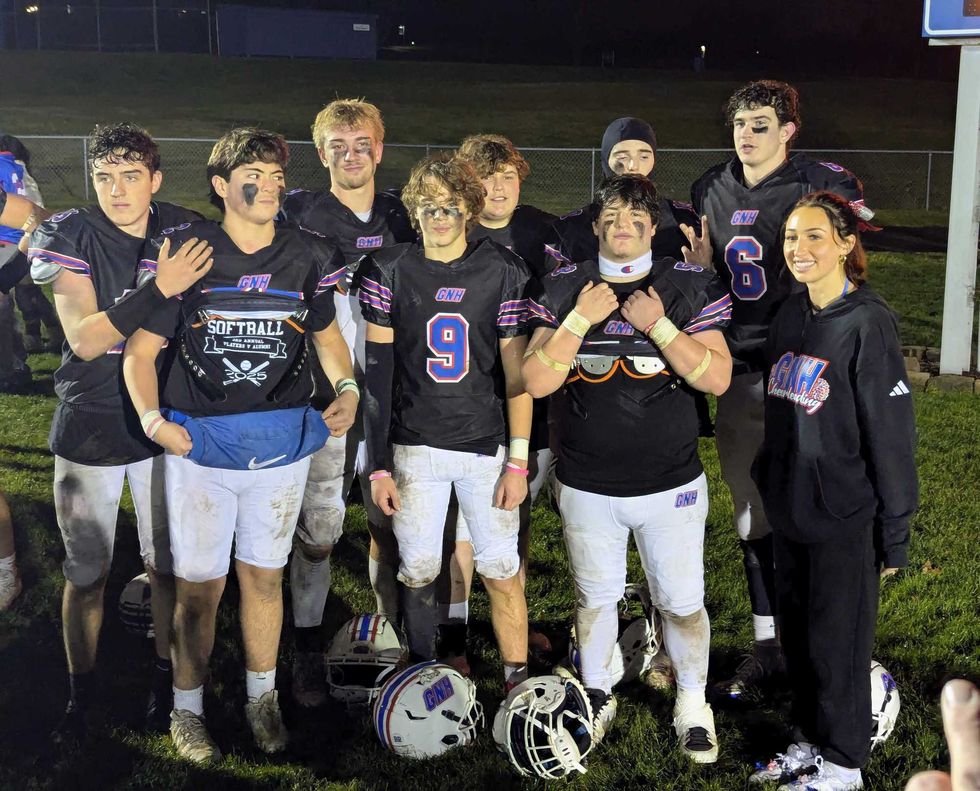Tart, Citrus and Sunny, Marmalade Is a Reason To Get Out of Bed in Winter

Photo by Cynthia Hochswender

There’s an apocryphal story about marmalade that says the sugary citrus jam got its name from Mary, Queen of Scots (the famous Mary from the 1500s, who was a cousin to Queen Elizabeth). Supposedly, the future queen was ill and her grandmother’s cook, who had a large supply of citrus fruit on hand, was trying to find something to tempt her to eat.
“Marie est malade,” he kept muttering in French (Mary is ill) as he tried out confections, ending up with the one that became known as “marmalade.”
The name actually comes from the Portuguese word for quince, which was originally the fruit used to make marmalade.
Over the centuries, what we have come to know as marmalade is usually made from citrus fruit, particularly oranges.
There is no realistic way to make it seem like marmalade is healthy, other than that it’s made from the peels and juice of citrus fruit (which are healthy, especially now, in the middle of winter). But like all fruit preserves, marmalade is made with a lot of sugar.
So, healthwise it’s hard to recommend marmalade. But in the COVID-19 quarantine world, if we all began baking bread last spring, then why not continue to entertain ourselves in quarantine by learning to make fruit preserves, which go so nicely with bread? And since it’s winter, the fruit in greatest abundance is citrus.
Worth the effort
Making marmalade is a lot of work, perhaps more than the average fruit preserve; but the color and flavor can definitely brighten up a gray winter morning and give you a reason to get out of bed.
For Christmas, my friend in Seattle gave me a copy of a book by a local chef (Yossy Arefi) called “Sweeter off the Vine.” It’s divided by seasons and many of the winter recipes involve citrus; and for some reason the marmalade recipe really reached out to me.
I made a batch. I wouldn’t do it every week, but it’s delicious and I recommend it if you have several hours to devote to lavishing attention on a few pounds of citrus.
The recipe calls for blood oranges and Meyer lemons, which I found at a Trader Joe store last week. You can use any citrus, even clementines or grapefruit. The blood oranges of course add spectacular color; and the Meyer lemons (which you can often find at Stop & Shop in North Canaan at a reasonable price) have a much softer, thinner skin that’s easier to work with. Whichever fruit you use, the thinner the skin and the plumper the fruit, the easier and more delicious your marmalade will be.
Not sugar-free
This recipe calls for 2 pounds or about nine blood oranges; 1 pound or about four Meyer lemons; one regular lemon; and 5 cups of sugar (yes, it’s a lot).
You’ll note that you don’t need to use pectin in this recipe, but you will want to get citrus fruit that has seeds in it (the pectin is in the seeds).
This will make lot of jam, so you’ll want to use canning jars with fresh sealing lids to preserve it. I use the 4-pint Ball jar known as the 125. I filled about six of them, and had about 2 cups of jam left to put in a regular jar that I did not “preserve.”
Before you get going on the fruit, either clean the jars in your dishwasher so they’re hot and sterile or boil them for 10 minutes.
You’ll need a very large, clean pot for boiling the jars after they’ve been filled; a clean funnel; some paper towels; and if possible a pair of canning tongs to lift the jars.
The tedious preparation of the fruit
Scrub your fruit and then use a juicer to get all the juice and most of the membrane out of the fruit.
Toss out the membrane but keep all the seeds.
Save the juice, of course.
After juicing, you should have a couple dozen half rounds of citrus. I cut each half round into three pieces and then used a sharp knife to carefully slice away the bitter white pith on the inside of the peel.
It’s tedious but necessary; do it while you listen to a podcast or watch a movie. The less bitter, spongy pith on your peel, the better your marmalade will taste.
The next step is equally tedious: You need to take your scraped peels and slice them as thin as possible, as thin as blades of grass or hay. Don’t worry about the length; long strands are actually kind of pretty.
Boil the rinds
If you have an InstantPot, now is the time to get it out: You need to boil the peel strips in 2 quarts of water (8 cups) until they’re tender and almost translucent — which can take up to an hour if you do it on your stovetop.
If you have an InstantPot, combine the water and peels and cook them on high pressure for 10 minutes, then quick release the pressure. If you don’t, use a large nonreactive pot and boil them lightly until they’re ready. You’ll need about 3/4 cup of the cooking liquid, so keep an eye on the pot and make sure you don’t boil away all the liquid. That’s one advantage of the InstantPot: Your liquid won’t boil away.
When they’re tender and almost translucent, rinse the peels in cool water to stop them from cooking any more.
At this point your jars should be clean and hot and ready to take out of the dishwasher; put them on a cookie sheet and put them in a 200 degree oven, so they’re warm when the jam is ready: If you put hot jam in a cool jar, the glass will crack.
The next two steps have to be done on the stovetop. First, take your giant pot and fill it with enough that your jars will be submerged. Start it boiling so it’s ready for canning as soon as the marmalade is done cooking. Once it’s boiling, reduce it to a simmer.
In a large pot that has a ceramic or other nonreactive surface, combine the citrus peels, the citrus juice (from way back in step one), the sugar, the citrus seeds (tie them up tightly in cheesecloth) and 3/4 cup of the cooking liquid.
Bring it all to a rolling boil (very big bubbles but not foaming) and keep cooking for about 30 minutes. At this moment, it’s great to have a cooking thermometer, to check when it reaches 220 degrees.
If you don’t have a thermometer, put some spoons in your freezer and then test a spoonful of marmalade at a time by putting it in the freezer for a few minutes to see if it gels up. I don’t personally find this method works very well but …
In which we say ‘carefully’ again and again
Once your marmalade is done, turn off the stove and take your tray of canning jars out of the oven.
Carefully spoon the jam into the jars, leaving a quarter inch of air at the top. Wipe the top and sides of the jars carefully with a wet paper towel; if there’s jam overflow, your jars won’t seal.
Carefully place your jars in the simmering water in your big pot. You don’t want them to tip because you don’t want any jam to spill on your jar, which could keep the jar from sealing.
In a perfect world, you should have a trivet at the bottom of your big canning pot so your jars don’t touch the pot surface, which can cause them to break. This sounds much fussier and harder than it actually is; I didn’t use a trivet and I did tip my jars over as I was putting them in the pot, and it was fine — but it’s possible that I just got lucky.
Return the heat to high so your water is boiling vigorously again, then boil your filled jars for 10 minutes.
Remove them carefully and set them down in a spot that’s relatively not sunny and relatively cool, which at this time of year is pretty much anyplace in my kitchen. Don’t move the jars for 12 hours, so you don’t ‘“break” the set of the marmalade or the seal on the jars.
If at the end of that time the lids aren’t sealed, clean the lids and jars again and boil them again for another 10 minutes. If your marmalade didn’t set, I suppose you could pour it all back in a clean pot and boil it down some more.
I always feel like preserving jars of food is very intimidating and time consuming, but it really is very easy. You just boil your jars for 10 minutes. Done. But it does help if you prepare your jars correctly and have the right tools. If you want to learn more about canning, go to the National Center for Home Food Preservation website at https://nchfp.uga.edu.
The Jan. 7 print edition of The Lakeville Journal and Millerton News had a recipe error. It said the marmalade should be kept at a rolling boil with "very big bubbles but foaming.” It should have said, “but not foaming."
Kent Town Hall, where the Inland Wetlands and Watercourses Commission approved the draft settlement.
KENT– A year-and-a-half-long legal dispute over an unpermitted roadway and dock built through wetlands on North Spectacle Pond is approaching a resolution. The KenMont and KenWood summer camp and the town’s Inland Wetlands and Watercourses Commission are close to reaching a mutually acceptable agreement.
The conflict began after the IWWC denied the camp’s retroactive application in March 2024 for the road and dock, which were constructed without town approval sometime last decade. The Commission found both structures violated town regulations, leading the camp to file a legal appeal.
Although most deliberations occurred in executive session, IWWC Chair Lynn Werner announced at the Commission’s Nov. 24 meeting that both sides had found a path forward. “We’ve come to a place where both sides are in agreement,” she said.
The Commission then voted unanimously to approve the settlement, which must now be submitted to the court for final approval. During the meeting, the Commission’s legal counsel, attorney Michael Ziska, explained that the current camp leadership—who were not involved in constructing the roadway or dock—had agreed to terms that would prohibit vehicle traffic on the road, require invasive-species management around it, and allow the IWWC to conduct regular inspections.
Ziska said the former camp leader responsible for building the road has since died, and the new directors are cooperating. He noted the roadway was built largely of logs that are now degrading into the wetland. Expert consultants for both the camp and the IWWC have advised allowing the roadway to be naturally reclaimed by the landscape, with light management to ensure several culverts beneath the structure remain functional.
“I believe that this settlement agreement protects the Commission’s interests,” Ziska said. “[It] recognizes the unique aspects of this particular violation – the number of years it’s been in place, the fact that the person who is responsible is no longer around, and the fact that the consultants have said things should probably be left as is for the time being. All of that commends itself to this draft settlement that we have proposed.”
Wes Allyn breaks away from the St. Paul defense for a reception touchdown Wednesday, Nov. 26.
BRISTOL — The Gilbert/Northwestern/Housatonic co-op football team ended the season with a 34-0 shutout victory over St. Paul Catholic High School Wednesday, Nov. 26.
It was GNH’s fourth consecutive Turkey Bowl win against St. Paul and the final game for 19 GNH seniors.
The Yellowjacket defense played lights out, holding St. Paul’s offense to 73 total yards and forcing three turnovers. Owen Riemer and Tyler Roberts each caught an interception and Jacob Robles recovered a fumble.

QB Trevor Campbell threw for three touchdowns: one to Wes Allyn, one to Cole Linnen and one to Esten Ryan. GNH scored twice on the ground with rushing touchdowns from Linnen and Riemer.
The game concluded in some confusion. A late run by Linnen ended when he was tackled near the end zone. The ball was spotted at the one-yard line and GNH took a knee to end the fourth quarter with the scoreboard reading 28-0. After the game, Linnen’s run was reassessed as a touchdown, and the final score was adjusted to 34-0.

Coach Scott Salius was thankful that his team went out on a high note. “We’re one of the few teams in the state that will finish with a win.” He commented on the “chippiness” of this year’s Thanksgiving matchup. “We have started a true rivalry.”
GNH won four of the last five games and ended with a record of 5-5.
“Battling back from 1-4, huge turnaround. I couldn’t be happier,” said GNH captain Wes Allyn after the win. “Out of the four years I’ve been playing, undefeated on Thanksgiving. No one will ever take that away from me.”

Looking back on his final varsity season, Nick Crodelle said he will remember “practice, complaining about practice, and getting ready for the games. Game day was a lot of fun.”
Hunter Conklin said ending on a win “feels great” and appreciated his time on the field with his teammates. “There’s no one else I’d rather do it with.”
“I’m so thankful to have these guys in my life,” said Riemer. “It’s emotional.”

“Once Upon a Time in America” features ten portraits by artist Katro Storm.
The Kearcher-Monsell Gallery at Housatonic Valley Regional High School in Falls Village is once again host to a wonderful student-curated exhibition. “Once Upon a Time in America,” ten portraits by New Haven artist Katro Storm, opened on Nov. 20 and will run through the end of the year.
“This is our first show of the year,” said senior student Alex Wilbur, the current head intern who oversees the student-run gallery. “I inherited the position last year from Elinor Wolgemuth. It’s been really amazing to take charge and see this through.”
Part of what became a capstone project for Wolgemuth, she left behind a comprehensive guide to help future student interns manage the gallery effectively. “Everything from who we should contact, the steps to take for everything, our donors,” Wilbur said. “It’s really extensive and it’s been a huge help.”
Art teacher Lilly Rand Barnett first met Storm a few years ago through his ICEHOUSE Project Space exhibition in Sharon, “Will It Grow in Sharon?” in which he planted cotton and tobacco as part of an exploration of ancestral heritage.
“And the plants did grow,” said Barnett. She asked Storm if her students could use them, and the resulting work became a project for that year’s Troutbeck Symposium, the annual student-led event in Amenia that uncovers little-known or under-told histories of marginalized communities, particularly BIPOC histories.
Last spring, Rand emailed to ask if Storm would consider a solo show at HVRHS. He agreed.
And just a few weeks ago, he arrived — paints, brushes and canvases in tow.
“When Katro came to start hanging everything, he took up a mini art residency in Ms. Rand’s room,” Wilbur said. “All her students were able to see his process and talk to him. It was great working with him.”
Perhaps more unexpected was his openness. “He really trusted us as curators and visionaries,” Wilbur said. “He said, ‘Do with it what you will.’”

Storm’s artistic training began at New Haven’s Educational Center for the Arts. His talent earned him a full scholarship to the Arts Institute of Boston, then Boston’s Museum School, where he painted seven oversized portraits of influential Black figures — in seven days — for his final project. Those works became the backbone of his early exhibitions, including at Howard University’s National Council for the Arts.
Storm has created several community murals like the 2009 READ Mural featuring local heroes, and several literacy and wellness murals at the Stetson Branch Library in New Haven. Today, he teaches and works, he said, “wherever I set up shop. Sometimes I go outside. Sometimes I’m on top of roofs. Wherever it is, I get the job done.”
His deep ties to education made a high school gallery an especially meaningful stop. “No one really knew who these people were except maybe John Lennon,” Storm said of the portraits in the show. “It’s really important for them to know James Baldwin and Shirley Chisholm. And now they do.”
The exhibition includes a wide list of subjects: James Baldwin, Shirley Chisholm, Redd Foxx, Jasper Johns, Marilyn Manson, William F. Buckley, Harold Hunter, John Lennon, as well as two deeply personal works — a portrait of Tracy Sherrod (“She’s a friend of mine… She had an interesting hairdo”) and a tribute to his late friend Nes Rivera. “Most of the time I choose my subjects because there are things I want to see,” Storm said.
Storm’s paintings, which he describes as “full frontal figuratism,” rely on drips, tonal shifts, and what feels like emerging depth. His process moves quickly. “It depends on how fast it needs to get done,” he said. “Sometimes I like to take the long way up the mountain. Instead of doing an outline, I just start coloring, blocking things off with light and dark until it starts to take shape.”
He’s currently in a black-and-white phase. “Right now, I’m inspired by black and white, the way I can really get contrast and depth.”
Work happens on multiple canvases at once. “Sometimes I’ll have five paintings going on at one time because I go through different moods, and then there’s the way the light hits,” he said. “It’s kind of like cooking. You’ve got a couple things going at once, a couple things cooking, and you just try to reach that deadline.”
For Wilbur, who has studied studio arts “ever since I was really young” and recently applied early decision to Vassar, the experience has been transformative. For Storm — an artist who built an early career painting seven portraits in seven days and has turned New York’s subway corridors into a makeshift museum — it has been another chance to merge artmaking with education, and to pass a torch to a new generation of curators.
Le Petit Ranch offers animal-assisted therapy and learning programs for children and seniors in Sheffield.
Le Petit Ranch, a nonprofit offering animal-assisted therapy and learning programs, opened in April at 147 Bears Den Road in Sheffield. Founded by Marjorie Borreda, the center provides programs for children, families and seniors using miniature horses, rescued greyhounds, guinea pigs and chickens.
Borreda, who moved to Sheffield with her husband, Mitch Moulton, and their two children to be closer to his family, has transformed her longtime love of animals into her career. She completed certifications in animal-assisted therapy and coaching in 2023, along with coursework in psychiatry, psychology, literacy and veterinary skills.
Le Petit Ranch operates out of two small structures next to the family’s home: a one-room schoolhouse for animal-assisted learning sessions and a compact stable for the three miniature horses, Mini Mac, Rocket and Miso. Other partner animals include two rescued Spanish greyhounds, Yayi and Ronya; four guinea pigs and a flock of chickens.
Borreda offers programs at the Scoville Library in Salisbury, at Salisbury Central School and surrounding towns to support those who benefit from non-traditional learning environments.
“Animal-assisted education partners with animals to support learning in math, reading, writing, language and physical education,” she said. One activity, equimotricité, has children lead miniature horses through obstacle courses to build autonomy, confidence and motor skills.

She also brings her greyhounds into schools for a “min vet clinic,” a workshop that turns lessons on dog biology and measuring skills into hands-on, movement-based learning. A separate dog-bite prevention workshop teaches children how to read canine body language and respond calmly.
Parents and teachers report strong results. More than 90% of parents observed greater empathy, reduced anxiety, increased self-confidence and improved communication and cooperation in their children, and every parent said animal-assisted education made school more enjoyable — with many calling it “the highlight of their week.”

Le Petit Ranch also serves seniors, including nursing home residents experiencing depression, social withdrawal or reduced physical activity. Weekly small-group sessions with animals can stimulate cognitive function and improve motor skills, balance and mobility.
Families can visit Le Petit Ranch for animal- assisted afterschool sessions, Frech immersion or family walks. She also offers programs for schools, libraries, community centers, churches, senior centers and nursing homes.
For more information, email info@lepetitranch.com, visit lepetitranch.com, follow @le.petit.ranch on Instagram or call 413-200-8081.